It was so much fun to meet with you yesterday. I am looking forward to working with all of you and have been so impressed with your excitement and enthusiasm. 2010-2011 is going to be a GREAT school year!
Here are some pictures that might be helpful as you begin to plan how to organize and set up your classroom this summer. If you are wondering about any other aspects of classroom setup, please let me know.
CALENDARYou will want to have a daily calendar posted somewhere in your classroom. You can purchase these premade as shown in this first picture from a second grade classroom, or make your own as shown in the second picture.
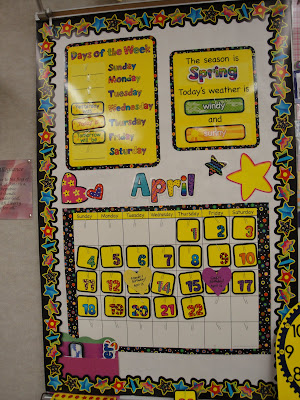
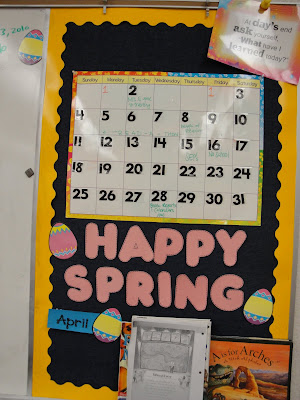
In the younger grades, some teachers spend time each day doing calendar activities and have a more elaborate calendar set up as seen in this picture from a first grade classroom.
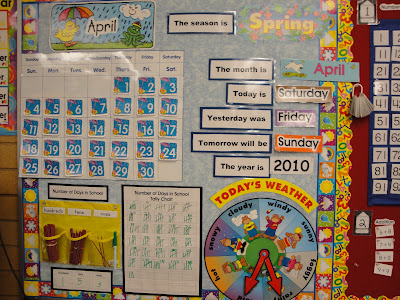
In the upper grades, a simple calendar with basic daily information posted on it is sufficient. This sixth grade teacher uses a wipe-off white board calendar she found at Wal-Mart.
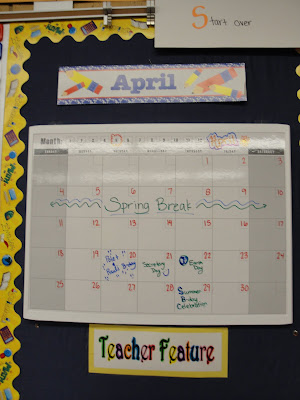 ROLL CALL and LUNCH COUNT SYSTEM
ROLL CALL and LUNCH COUNT SYSTEMEach day in your class you will be calling roll and taking a lunch count. There are several creative ways to organize this. In this picture, a second grade teacher uses sticks and plastic cups. Each day upon arriving at school, students put their sticks in the appropriate cup to indicate what they are having for lunch.
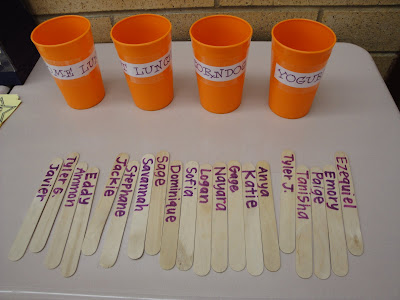
Some teachers use a chart as shown in this picture. Students put a colored stick (red for home lunch, green for school lunch, yellow for corndog, etc.) in a pocket with their name on it.

Other teachers use a metal cookie sheet with magnets. Students move their magnet to indicate their lunch preference for the day.
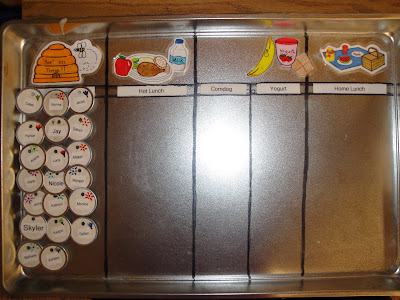 CLASS HELPER BOARD
CLASS HELPER BOARDIn your classroom, you will want to set up a system for having the students help you with basic classroom chores. Here are a couple of ways to organize that. This teacher takes a picture of each of her students on the first day of school (each grade level team has a digital camera to share) and then laminates the pictures. This board indicates the different classroom jobs and the teacher simply hangs the picture of the student underneath the job they are doing that week. Extra pictures are placed in a pocket that is kept to the side.
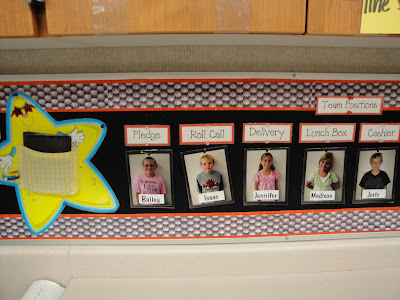
Here is another example where the teacher uses library pockets and craft sticks.
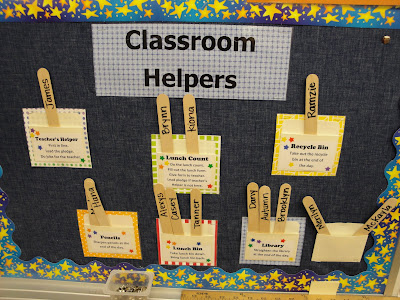 RULES & PROCEDURES
RULES & PROCEDURESYou will want to post your classroom rules in a prominent place in your classroom. Here are several examples of posted classroom rules.
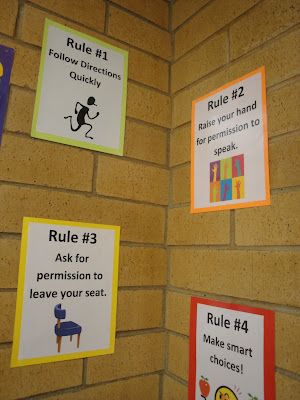
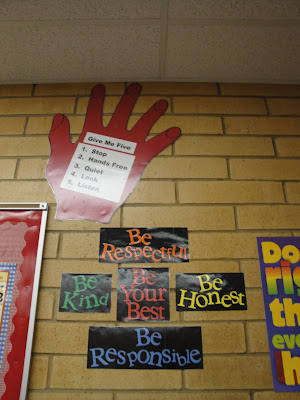
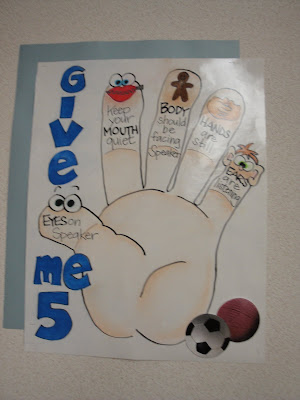
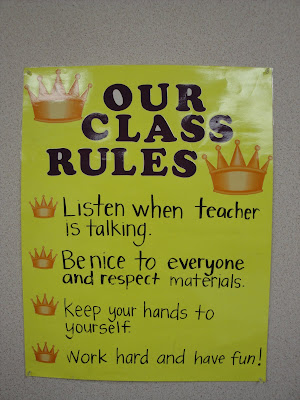
Another great idea I have seen is to post procedures around the room. For example; post the rules for sharpening pencils by the pencil sharpener. Procedures for getting drinks by the drinking fountain. Rules for lining up and walking down the hall by the door.
BIRTHDAYSMost teachers post something in their classroom indicating student birthdays. This could be done right on the calendar, or on a separate chart or bulletin board hanging somewhere in the room. When you meet with your grade level teams, ask them what they normally do to celebrate student birthdays.
 WORD WALL
WORD WALLOur district encourages teachers to create and maintain a Word Wall that displays high frequency words, words that are tricky to spell, or grade level vocabulary words. You will want to think about creating some type of Word Wall in your classroom. These can be as simple as die cut or computer printed letters as seen in this picture.
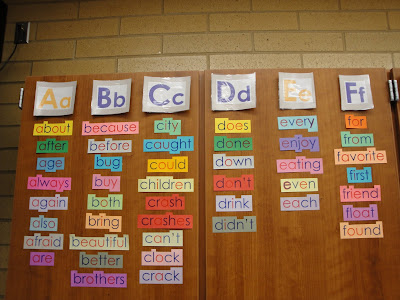
In this picture, the teacher created her word wall to match the cowboy theme of her classroom decor. She uploaded cowboy clip art in to Word, typed the letters on top and printed them on card stock on a colored printer.
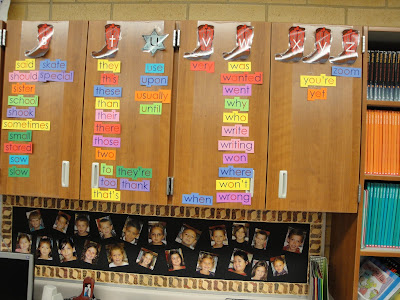
You can also purchase complete Word Wall sets from educational supply stores that are premade.
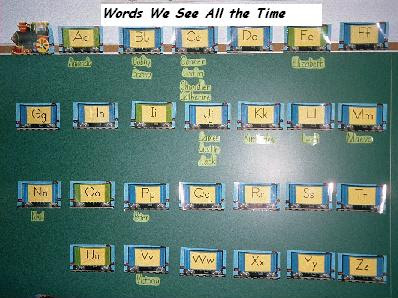
Most teachers in our building hang their word wall on the cupboards, but here is an example of a teacher who posts her word wall in a separate area.
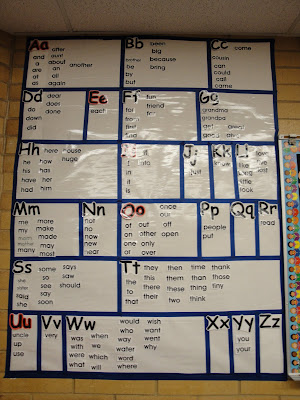 DAILY SCHEDULE
DAILY SCHEDULEYou will want to post your daily schedule somewhere at the front of the room. Most teachers create magnetic word strips that list all of the days activities. These magnetic strips can be hung up or taken down depending on the schedule for that day. Here are a couple of examples.
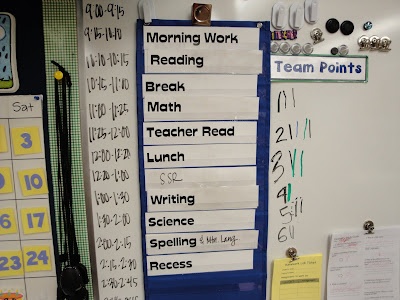
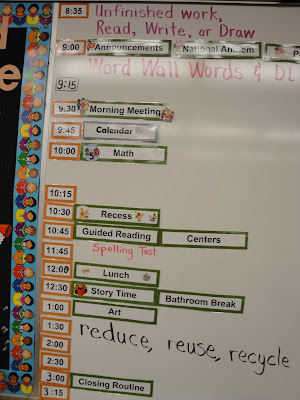
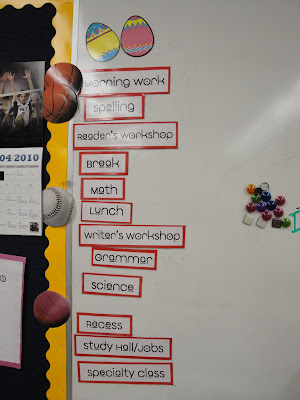
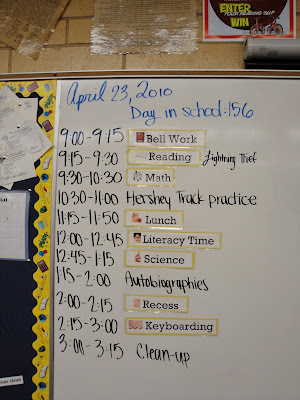 DISPLAYING STUDENT WORK
DISPLAYING STUDENT WORKCreating an area in your room or in the hallway to display student work throughout the year is a great idea. The display can stay up all year and the only thing that changes is the student work you hang there. Here is a very simple example of a student work bulletin board.
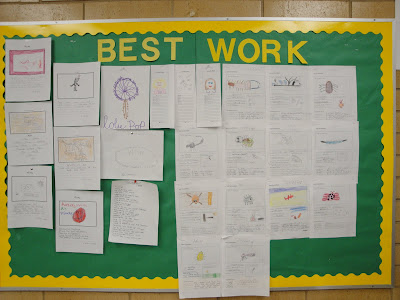
Here, another teacher created a wall display outside the room with student names listed on clothespins. Student work could easily be hung up or taken down from the clips throughout the year and her display matched her jungle theme.
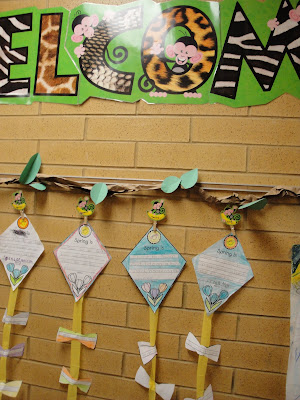
Here is another teacher with a similar display that matched her farm theme.
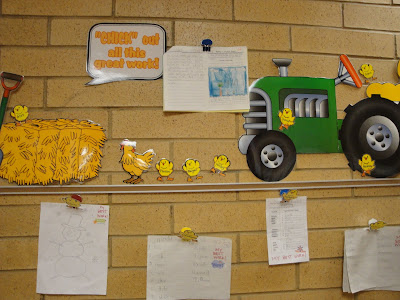
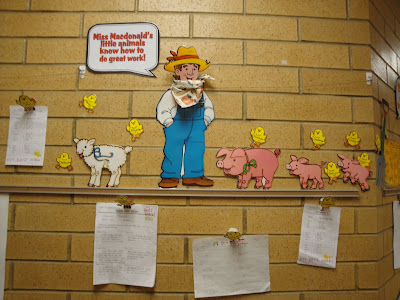 CONTENT AREA BULLETIN BOARDS
CONTENT AREA BULLETIN BOARDSMost teachers create bulletin boards or wall displays that relate to the content they are teaching. Here are a few examples. This teacher created a math wall where pertinent information about math is displayed. This information displayed on the board changes depending upon the unit the class is studying.
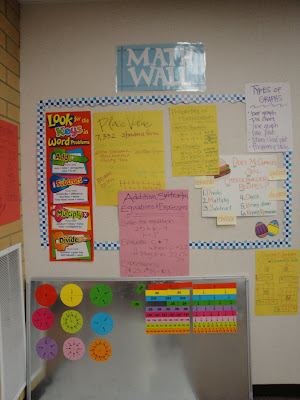
Here a teacher has created a working bulletin board for reading. Notice the small whiteboards to the left of the bulletin board. These boards contain the assignments for guided reading groups.
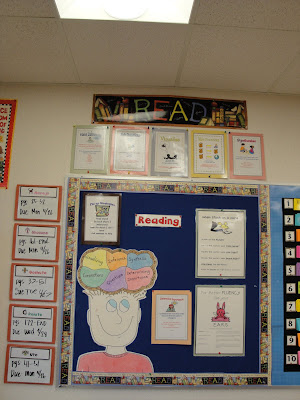
Here are some examples of bulletin boards/displays related to writing instruction. Notice on this writing display that the teacher took pictures of actual students in her class behaving appropriately and doing each step in the writing process. She then hung these pictures up to remind students exactly what they should be doing during writers workshop.
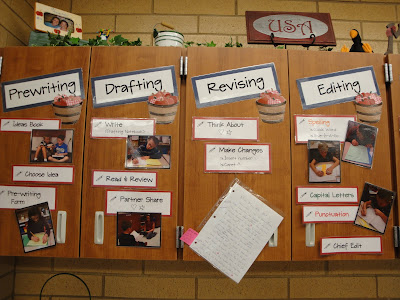
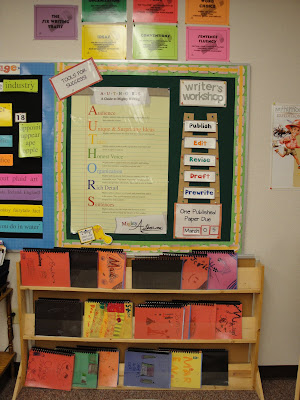
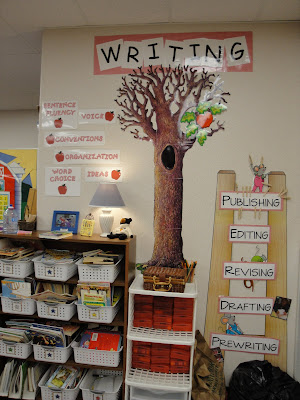 WORK AREAS
WORK AREASIt is a good idea to plan for a reading area/nook in your classroom. You can decorate it or keep it simple.

Other teachers have writing areas or areas where they keep math materials in easy reach of students.
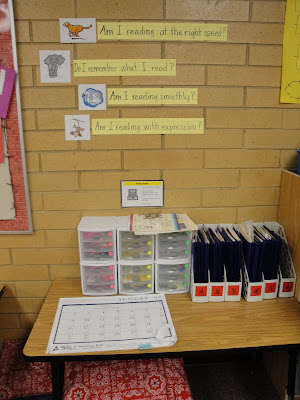
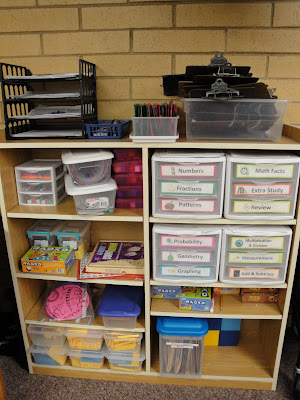
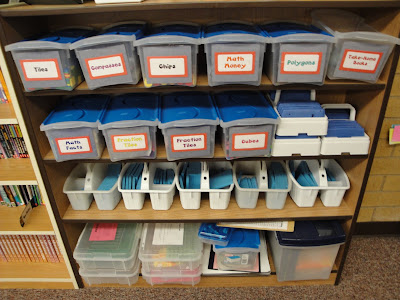
I love how this teacher keeps student supplies in plastic containers. When students are working on projects and need materials such as markers, colored pencils, scissors, or glue, they can bring one of these containers to their table.
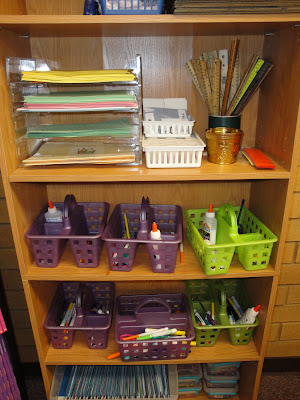 JUST FOR FUN
JUST FOR FUNYou could also think about doing a display in your classroom that is fun and showcases something about the students. I wanted to share this wall display of a 6th grade intern. To go along with her classroom theme, she hung a picture of Einstein and then had all of the students mock his pose in a photograph. This has been hanging in the classroom all year and is a favorite of everyone who visits her classroom.






























































